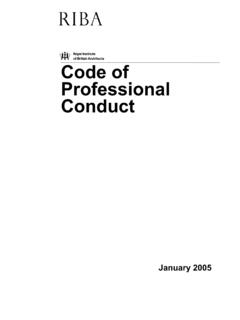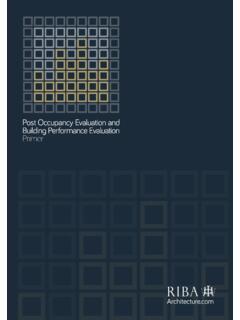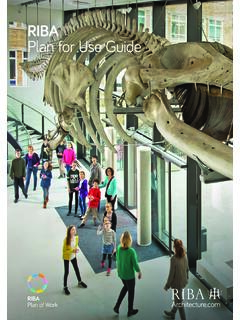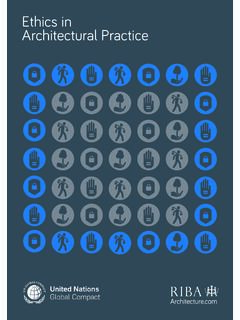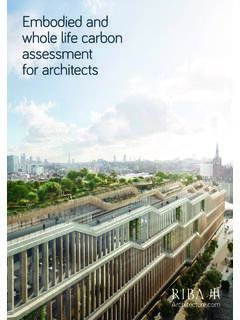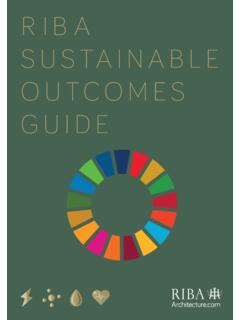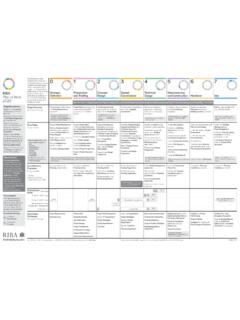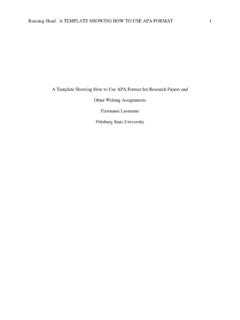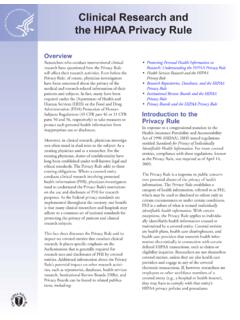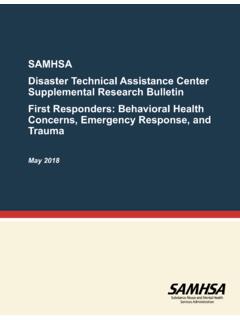Transcription of How architects use research - Royal Institute of British ...
1 How architectsuse research case studies from practice2 How architects use research case studies from practiceHow architects use research RIBA 20143 Foreword 4 Executive summary 6 Key themes 8 Case studies 171: Pierre Mar architects 182: Sofie Pelsmakers 243: Axis Design architects 284: Avery Associates architects 34 5: Hyde and Hyde 406: Design Engine 447: HLM architects 50 8: PRP architects 56 research methods 62 How architects use researchContents4 ForewordWhat do architects understand research to be? How do architects use research ? When and how do architects undertake research in their practices? What research knowledge do practising architects need?
2 How does research bring value to architects practices and their clients? How do architects connect with research from academic and other research organisations?For practicing architects research can be a difficult concept to pin down and define. It is a term which can mean different things to different people, but what is clear is that research can be the intellectual fuel for the engine of innovation and growth for many businesses, including architects short investigative publication, commissioned by the RIBA, uses interviews and case studies to try to answer some of these key questions in relation to the nature of research in practice. We hope that it will inspire architects practices to recognise the research they do in their day to day work, to actively support research activity and engagement as part of their business models, and to reap the benefits of the research knowledge available to them.
3 It will also be invaluable in helping to shape the RIBA s own future research strategy, in particular as we assess progress against the ambitions set out in Leading Architecture1 and start to develop our strategy from 2016 R. Hodder MBE Harry RichRIBA President 2013-2015 RIBA Chief Executive 1 RIBA (2012) Leading Architecture: The RIBA s Strategy 2012-2016, RIBA: at: < [Accessed 20 Aug. 2014]Stephen Hodder and Harry Rich image : Morley von SternbergForeword5 ForewordWhatHowWhen56 This study uses interviews to develop a series of case studies and build up a picture of how architects in practice currently view research as a facet of their activities. By speaking to a range of different types and sizes of practice we have attempted to discover the various ways in which architects define, obtain, undertake and use research .
4 We have also asked what benefits and advantages research knowledge brings to their business performance and quality of work, and to find out those areas of research in which they are most interested and study is a snapshot of research activity in practice, offering important insights into a sometimes under-appreciated and frequently misunderstood aspect of architectural practice. Our key findings are that: architects practices value research and consider it to be intrinsic to their work. Most practice based research is focused on the requirements of individual building projects. There is relatively little separately funded research activity in architects practices and few practices access public research funds. Most research is technical/functional in nature; frequent areas of interest are environmental sustainability and energy efficiency, analysis of precedents, and research into materials, products and construction techniques.
5 Post-occupancy evaluation is gradually emerging as an important research activity. Some practices use research in areas such as design theory, sociology and policy to develop their philosophical approach. Where broader research programmes are undertaken they tend to focus on developing sector expertise which enhances credibility and provides competitive advantage. Links to academic and other research organisations and knowledge bases are quite weak and where they do exist, are generally based on individual relationships. Practices recognise the potential for research as a separate practice activity forming part of a diversified service offer, but this has not yet been realised on a widespread of these findings are discussed in more detail in the body of the report, but some further discussion is useful found that architects consider research to be an intrinsic part of the project work they undertake.
6 This encompasses a range of aspects from understanding client needs, and evaluating project contexts, to assessing the performance characteristics of materials and building components. In fact most research in practices seems, perhaps not surprisingly, to be project focused. This project focused research includes investigation of environmental sustainability and energy efficiency, analysis of precedents, and research into materials, products and construction techniques. Post-occupancy evaluation (POE) is clearly emerging as an area of increasing interest and importance although, as we know from other studies, there remain a number of barriers to routine practices whose portfolio of work is focused on a particular sector (or sectors) we found recognition of the value of specialist sector knowledge developed through broader research , not necessarily related to individual building projects, as a way of demonstrating expertise and differentiating themselves to competitive advantage in the market place.
7 A specific research knowledge base both informs work in a specific sector and is a useful marketing SummaryExecutive summary7 Whilst most of this broader practice- rather than project-orientated research was concentrated on technical and functional aspects, we did find examples of practice research which were more orientated towards design theory, sociological and policy matters. For some practices this was important in enabling them to develop a distinctive philosophy and demonstrate thought practices had more compelling examples of formal engagement with academic and research institutions, which went beyond teaching or individual research . In these larger practices there was an appreciation that research could be developed as a business service; part of a more diverse practice offer, which could broaden their market and generate new revenue streams.
8 It is noteworthy that where practices were engaged with academic researchers this tended to be with individuals rather than at an institutional level. There was only one practice which had received direct UK Government research the picture that emerges is one in which the role and value of research in a knowledge-based profession is recognised on a widespread basis, albeit with some practical barriers that stopped architects realising their aspirations. The project focused nature of architectural practice tends to mean that research is mainly undertaken in relation to individual building projects and is largely funded through marginal elements of project fees. Overall, linkages to research organisations and research knowledge bases were often weak and ad hoc in nature. However, there is strong evidence of an increasing awareness of the potential role for research not just as part of project processes but as a distinct area of practice activity, potentially forming part of a diversified range of practice services.
9 Executive SummaryWe found that architectsconsiderresearch to be anintrinsicpart of the projectwork architects understand researchPracticing architects can engage with research in a number of ways with knowledge, process or resources but the case study interviewees did not draw a clear distinction between these forms of research : research knowledge the subject of the research knowledge about sustainability principles and how they can be integrated, knowledge of which materials to use in a specific context. research processes ways of researching and finding knowledge a site review, a visit to an archive, an experiment in materials. research resources ways of accessing knowledge a journal article, the archive itself, blogs or this study was focused on the first two of these types, some overlap with the third research resources was themesKey themes89 Knowled eSubject of researchProcessesWays of researchin and findin knowled eKnowled eof researchprocessesProcessesfor accessin knowled eKnowled eof resourcesResourcesWays of accessin knowled eFigure 1research and knowledge in architectural.
10 BOP consultingKey themes10 The move towards more structured research is part of a growing trend within the architectural community away from core practice (designing buildings) towards using architects skills in other ways (such as generic design skills, communication, community engagement, project management, and some scientific skills). This can be seen as a move from core to diverse practice, mirroring changes in practice identified in the RIBA Building Futures publication The Future for Architects2. In very general terms (and recognising the limited sample of this work), this was viewed as a general trend or market movement away from core practice and serendipitous research towards a diverse practice and structured research . This is typified by PRP architects , who have diversified their practice by entering new research and development areas; often these are highly technical and scientific.
